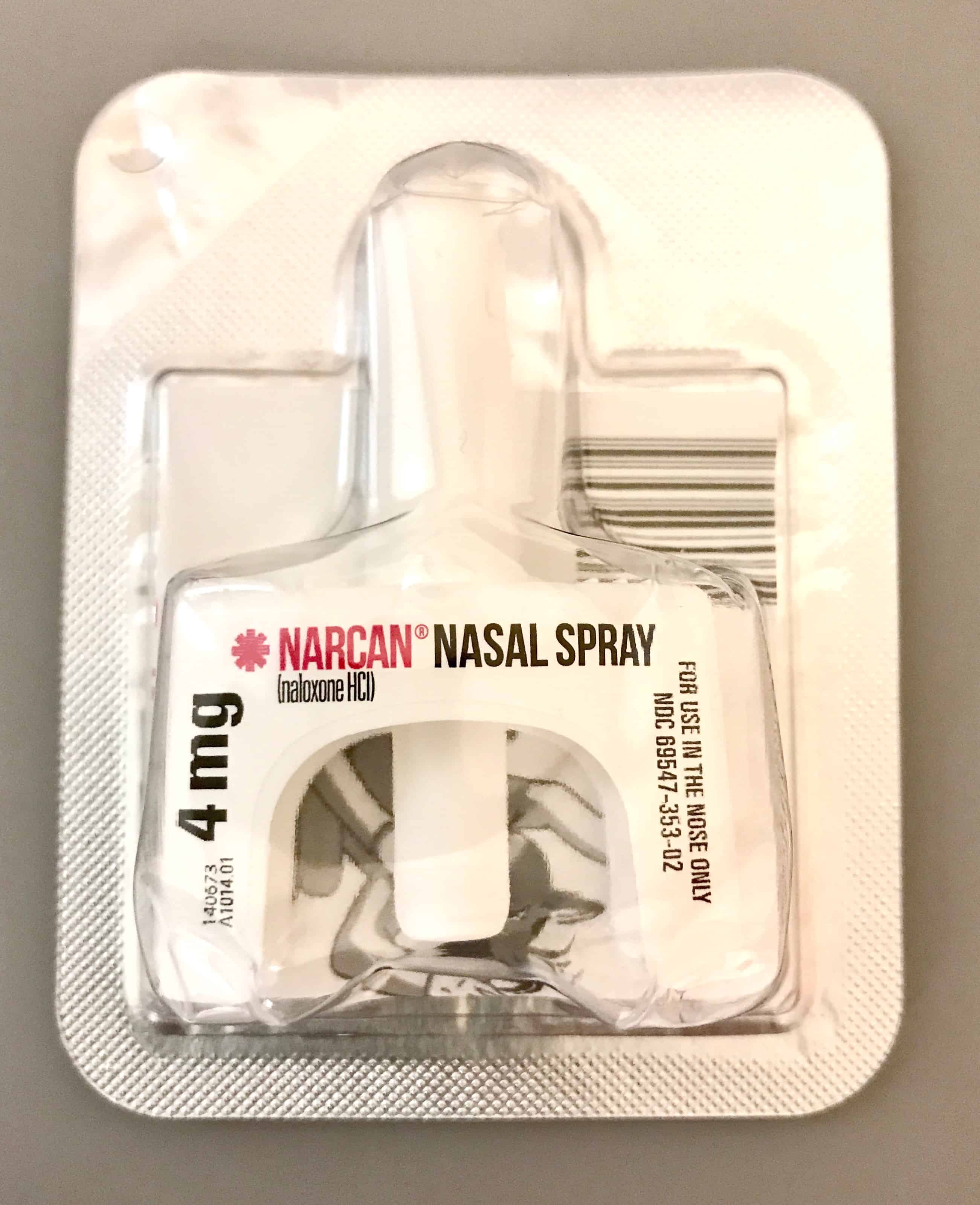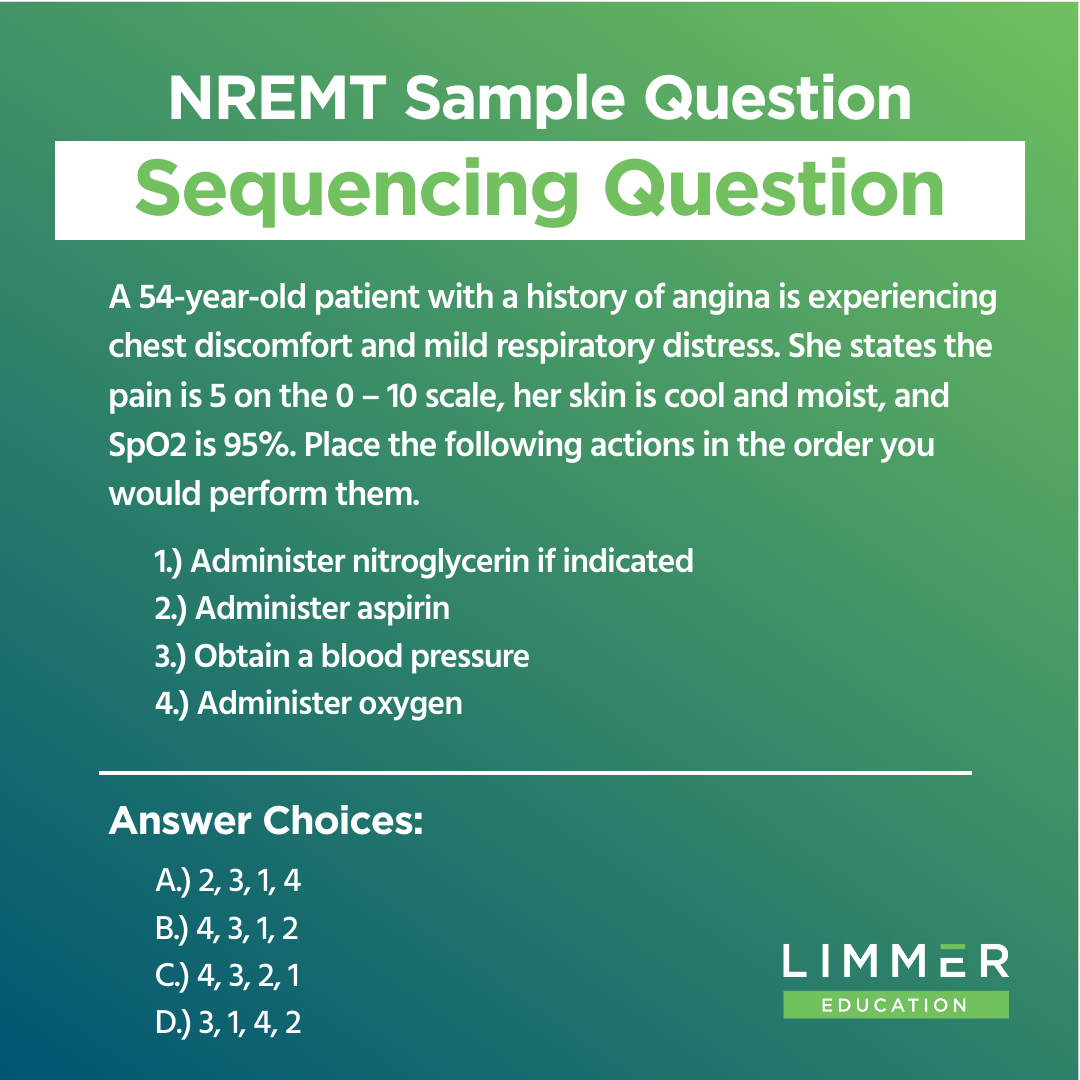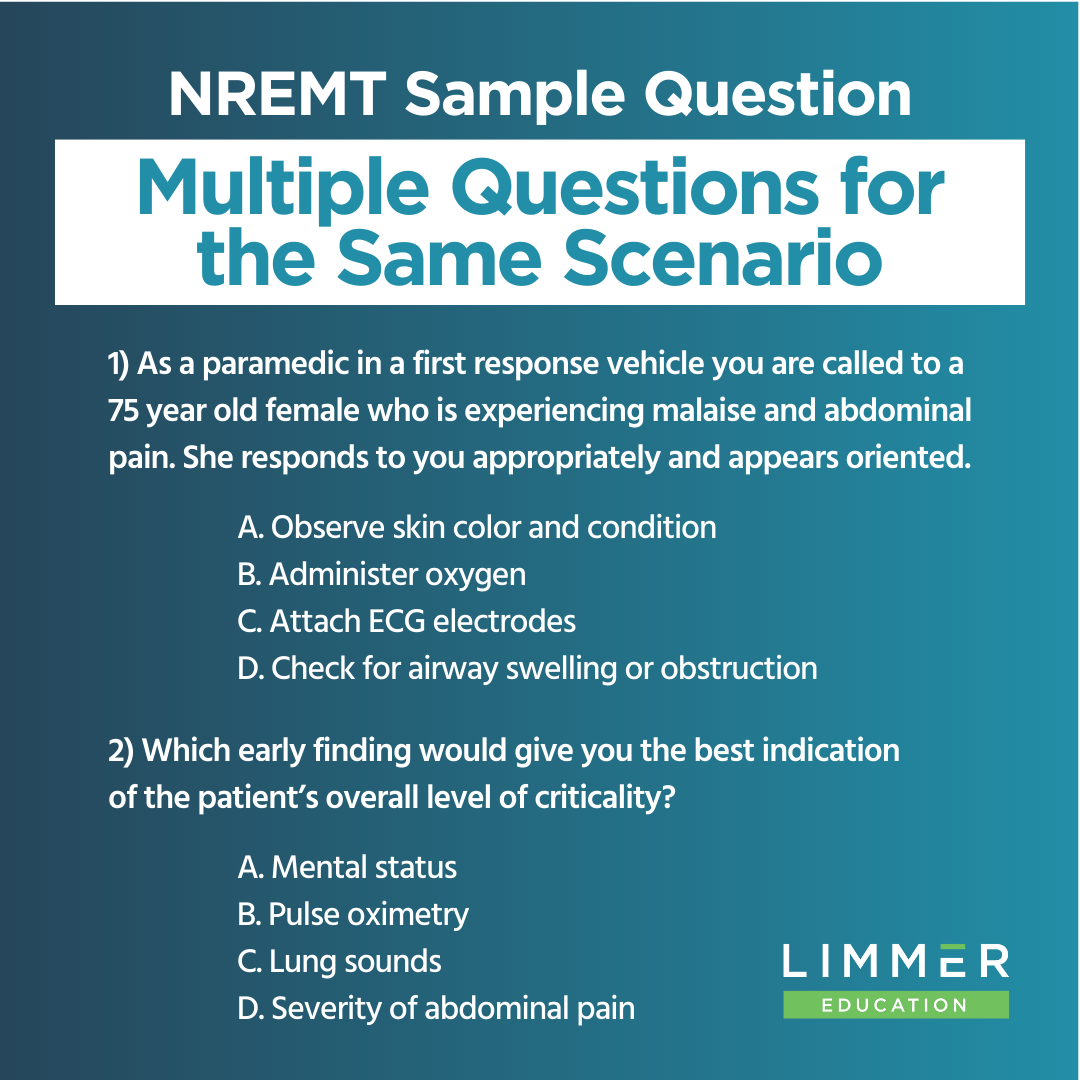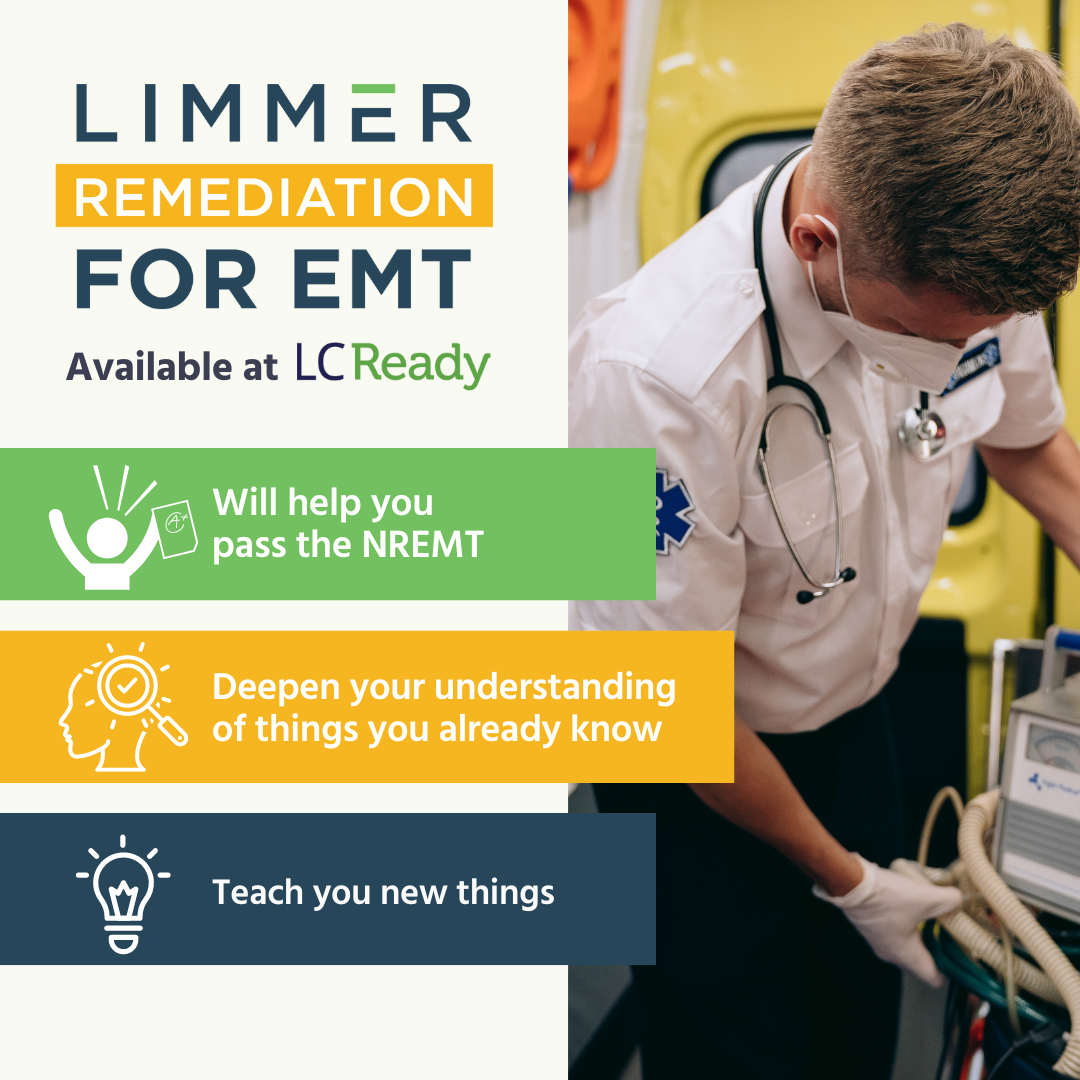
Dan Limmer, BS, NRP

by Limmer Education
Our articles are read by an automated voice. We offer the option to listen to our articles as soon as they are published to enhance accessibility. Issues? Please let us know using the contact form.
A few days ago, we hosted a crash course for NREMT prep. During that webinar, people asked a lot of good questions. Some were about the exam and how it works. Some were about clinical decisions and what you need to know to take care of your patients. They are all important things to know as you begin the next phase of your EMS career. (But your odds of encountering a lightning strike patient in the wild are pretty low.)
If you didn’t attend the crash course, you can still download the notes. They highlight 25 must-know items for the NREMT, including tips for ALS providers.
No. This isn’t the best use of your time–and you can’t remember them all. The NREMT won’t put a medication in a question where that is the only way to get the correct answer. It is helpful to know some of the common medications when you begin to practice as an EMT (hypertension meds, diabetic meds, etc.), but there is no need to do that now.
Drugs are named according to class. Different suffixes represent different drug types. Knowing drug suffixes gives you a better idea of each drug without memorizing everything. Here’s a cheat sheet for drug suffixes.
If you’re into memorization and have spare time, this list of the top 200 prescribed drugs for 2022 is a good place to start. Hint: You can click on topic headers to sort by the field you want.

Give aspirin before nitro. You do not need vital signs to give aspirin (unlike NTG). Aspirin stops platelet clumping (aggregation) and can help limit the amount of vessel occlusion and should be given early in the call for suspected cardiac-related chest pain when there are no allergies or contraindications. Nitroglycerin, when indicated and appropriate, is given after aspirin.
Correct. It will not work on benzos, Xanax, Valium, etc. If you give Naloxone and the patient doesn’t wake up or doesn’t start having better respirations, either you’re not giving enough Naloxone or the patient isn’t ODing on opioids.
Tip: When you give Naloxone intranasally, push the plunger hard! A hard push atomizes the liquid, turning it into a mist that covers a wide area. If you don’t push the plunger hard enough, the liquid dribbles out and isn’t very effective.

This is a big nook and cranny, but there are a few things to remember about lightning strikes. The first is whether the strike was direct (often fatal) or conducted, for example, through bleachers or the ground. When conducted, there’s less chance of it being fatal – but it’s more likely there are multiple patients.
Then remember that electricity passes through the body and can cause damage in many ways. In EMS, we have the most control over cardiology. Apply a cardiac monitor early and be prepared for dysrhythmias.
If you see lightning strikes on the NREMT, it might mention Lichtenberg figures. These are fern-shaped patterns on the skin that occur after lightning strike.

Yes. Largely. You will be given a series of facts and asked to make a decision. You must identify things that indicate criticality and act on those first. You need to choose assessments and treatments based on the patient's presentation. The processes you use and the things you decide are very similar to the street.
There are a few differences between the NREMT and the street. These might throw you off – but these don’t make the test unlike the street.
On the street, you can ask any question you want and perform any assessment you want. Your choices are relatively limitless. The NREMT doesn’t hand you all the choices you might get on a scene–and you don’t have control of the information you receive. You may read a question, look at the choices, and think, “I wouldn’t do any of those!” But you have to choose from what is given.
The other difference is that you can’t see the patient. On the exam, be sure to read the patient’s age. On the exam you don’t get the “look test” in the from-the-door assessment like in the field. Everything is in words. You must read carefully to grasp all the clues you are given.
Only AEMT and paramedic candidates will soon see new question styles on the NREMT. The questions are not harder, but they look different than what you’re probably used to.
There are two new types of questions:
Sequencing Questions: The exam provides a list of treatments or actions. Your job is to put them in the correct order.
Multiple Questions for the Same Scenario: The exam presents a scenario, and you must answer a series of questions all based on that same scenario.

Correct answer is at the bottom of this page

Correct answer is at the bottom of this page
Ask this question and be brutally honest with yourself: Why did I fail?
Maybe you didn’t learn much from your course and need to take another one. Or perhaps you didn’t really apply yourself to your coursework. There could be reading/learning/attention deficit issues, whether diagnosed or not. Or maybe you’ve just lost confidence – maybe you’ve even lost the desire to become a provider.
After pinpointing the reason(s) for failing three times, you must choose a remedial course (the National Registry requires this). If you’re trying to become an EMT, we have the perfect remediation program for you. It’s self-paced, in-depth and teaches you through a variety of attention-keeping techniques, like drawings, videos, quizzes and discussions. Learn more.

Yes! The NREMT stays up to date in two ways:
Item writing panels have physicians and experienced EMS providers to ensure content is appropriate – and these panels refer to current books if they aren’t sure about something.
The NREMT avoids heavily protocol-driven things because protocols change and vary by location.
Most of the questions on the exam count toward your score. But on every test there are some pilot questions that don’t count. On the EMT test, there are 10 pilot questions. On the paramedic test, there are 20 pilot questions. And on the AEMT test, there are 35 pilot questions.
Pilot questions are questions that the National Registry is just trying out to see if they’re good testing material. You and many other people across the country will get a pilot question; then, the NREMT assesses everyone’s responses to the question to determine if it’s a valid or fair question to include on future exams as a scored item.
If you see questions that confuse you or shake your confidence, it’s helpful to remember those might be the questions the NREMT is testing out. They might not count toward your score, so don’t stress! Just answer every question to the best of your ability and move on.
The National Registry has more information about pilot questions here.
The NREMT gives you the time frames listed below. It is based on the maximum number of questions – although you may get fewer questions.
EMT exam: 2 hours (120 questions max)
AEMT exam: 2 hours, 15 minutes (set 135 questions)
Paramedic exam: 2 hours, 30 minutes (150 questions max)
You may only get 70 (EMT) or 80 (paramedic) questions, but you will still have the full time available to you.

Nope. The exam is timed, but individual questions are not. You’ll be able to answer some questions in 15 seconds, and others will take you 2 or 3 minutes. The average length of time a student takes to answer a question is 32 seconds.
Remember, worrying about the clock will only distract you from the test. Breathe, read each question carefully, and answer to the best of your ability.
Got more questions about the NREMT? Drop them in the comments below. And while you’re still here, don’t forget to get the 25 Things You Need to Know Before Taking the NREMT handout.
Sequencing Question: A
Same Scenario Question: 1.) A, 2.) A

Dan Limmer, BS, NRP

Mike Miller

Dan Limmer, BS, NRP